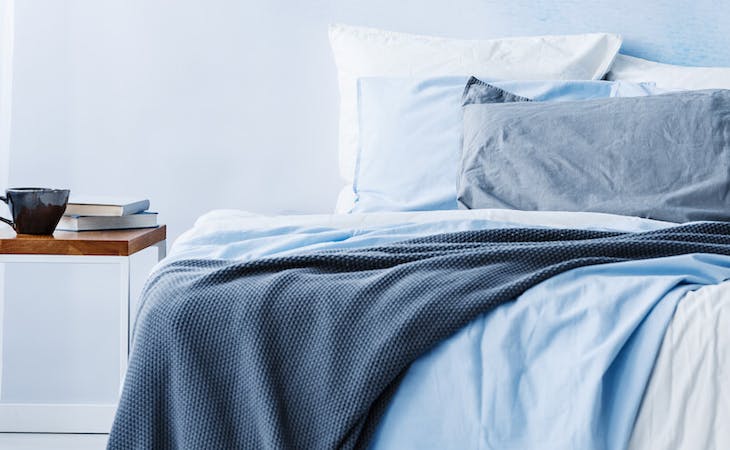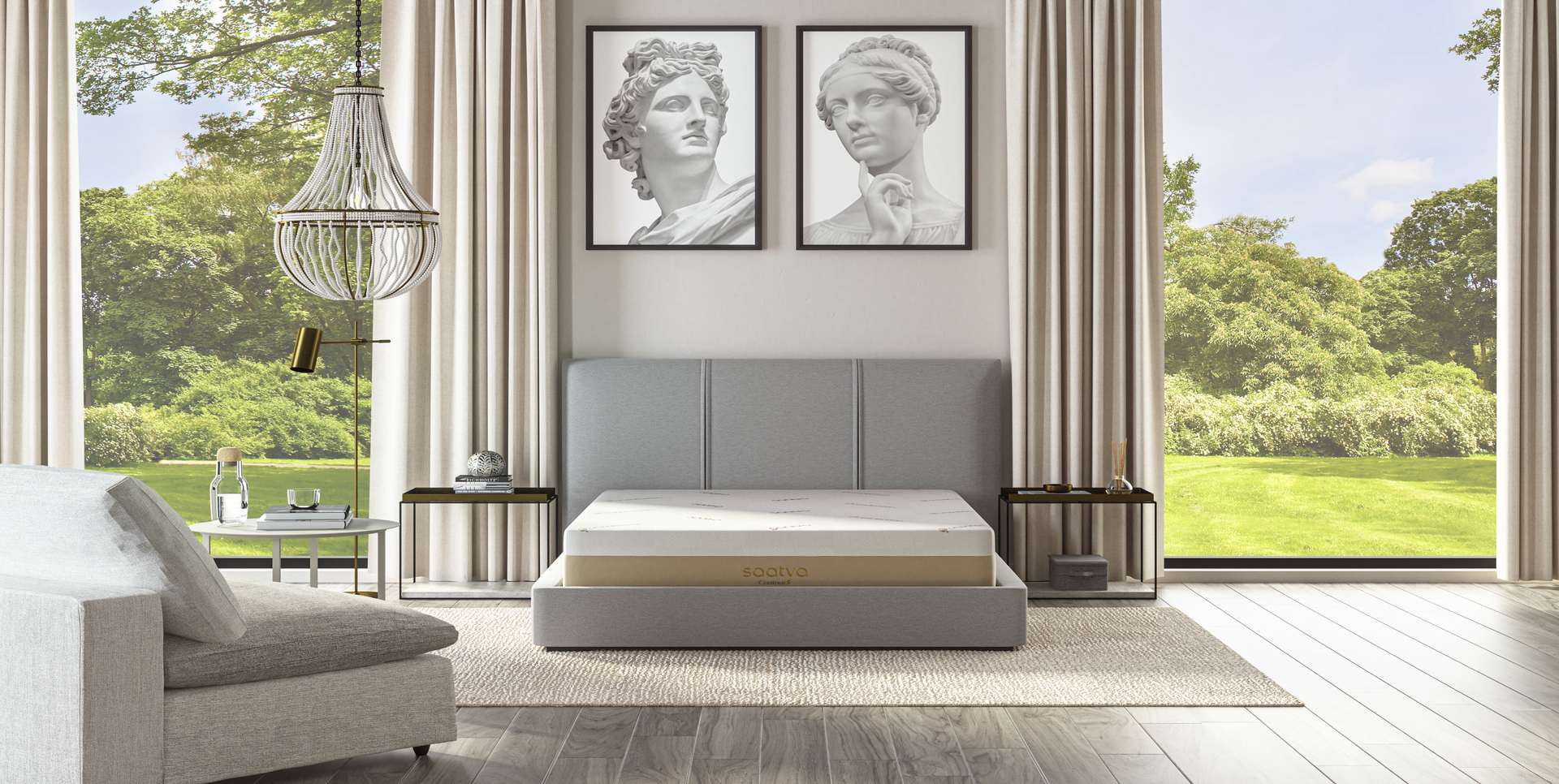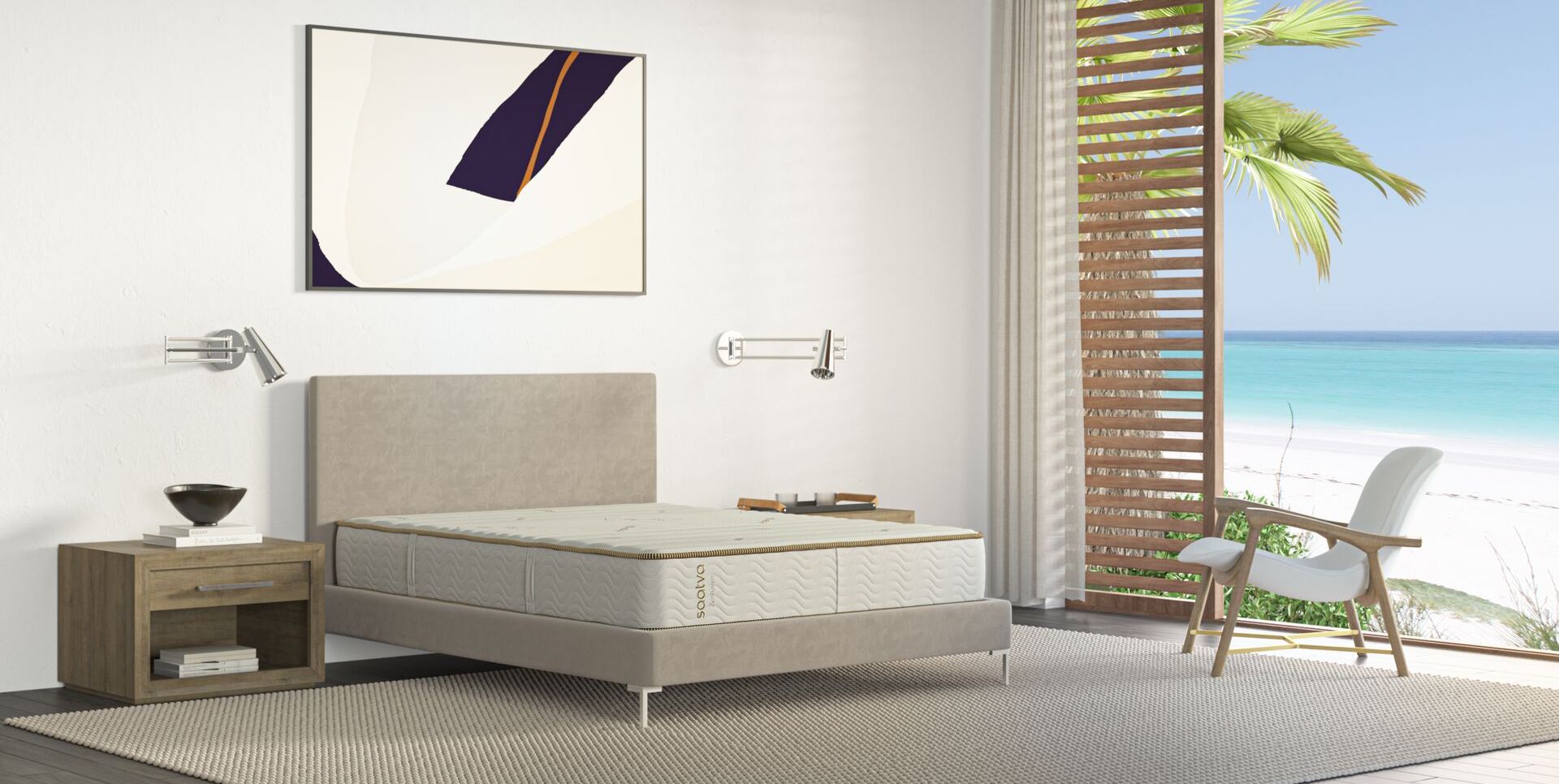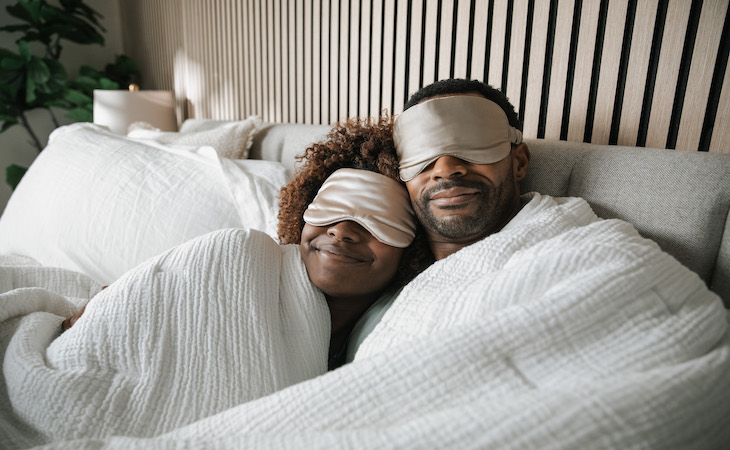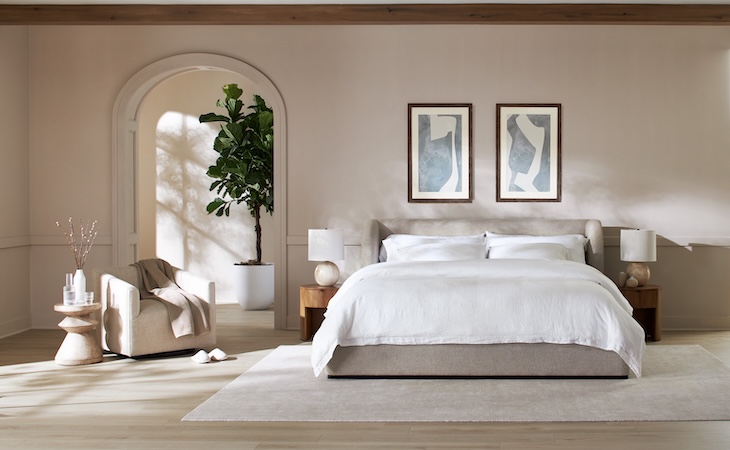There are dozens of at-home remedies for getting a good night’s rest (ahem warm milk and counting sheep). But it turns out the easiest methods involve making a few simple tweaks to your bedroom. “It is very important for the bedroom to be a pleasant surrounding—providing a sense of order, tranquility, calmness, and relaxation,” says Terry Cralle, RN, certified clinical sleep educator.
Designing your bedroom for better sleep includes everything from the temperature of your bedroom to the colors on the wall to whether or not you have a Jenga tower of unread books on your nightstand. These eight hacks will go a long way toward helping you get your eight hours.
Turn down the temperature
Keeping our hands off the thermostat is ingrained in us from childhood (thanks, Dad). But when it comes to sleep, don’t be afraid to touch that dial. “The suggested bedroom temperature for optimal sleep is between 60 and 67 degrees Fahrenheit,” says Cralle.
Keep in mind, no two bodies are alike. Some run hot while others run cold, so test out different temperatures until you find the one that suits you or both you and your partner.
Keep your bedroom dark
The simplest bedroom design for better sleep involves blackout curtains. Too often, a sliver of light from street lamps or the early morning sun keeps us from getting a full night’s sleep. Eliminate the problem with effective blackout curtains as well as drapes to ensure no light can get in and disturb your REM.
Choose a soothing wall color
“The color of our sleep environment can influence our sleep—helping us to relax and unwind at bedtime,” says Cralle.
Studies have shown that cerulean colors like blue and green result in the most sleep with people waking up happy and refreshed. Brighter colors like red, orange, and purple, meanwhile, are shown to excite the brain, which is the last thing you want to happen before bedtime.
Purify the air
Good quality air is vital for overall health and the quality of your sleep. Dust particles and mold are known to intensify sleep apnea and contribute to a range of other health problems. So, as your mother always said, keep your bedroom clean. Regularly dust and wash the carpets, drapes, and sheets. During the day in warmer weather, leave the windows open for a few hours and open the curtains so the light can get in.
For people with allergies, an air purifier may help to alleviate the irritation. Or try Mother Nature’s air purifier—plants, like jasmine, peace lily, and English ivy. A NASA-conducted study revealed that “plants can play a major role in the removal of organic chemicals from indoor air.”
Block out noise
Perhaps the most crucial method for how to make the bedroom better for sleep entails eliminating irritating noise. I’m not talking about white noise or pink noise; I mean barking dogs, snoring partners, and honking horns. For those, earplugs are the best remedy.
A soothing white noise machine placed on the floor near your bed may be the trick for blocking out background noise and ensuring a restful night’s sleep.
Declutter your space
There’s something to be said for minimalist Scandinavian design (besides it being super-chic). A sleep study conducted in 2015 showed that people who have cluttered bedrooms have a higher chance of sleeping problems, including the inability to stay asleep.
Picking up the piles of dirty clothes on the floor and organizing the stacks of books next to your bedside will go a long way toward improving the look of your bedroom—and the quality of your sleep.
Invest in a new mattress and pillows
Considering how much time we spend on our mattresses, it’s essential to buy a new one every 10-15 years. If your mattress has lumps, dips, rips, or springs sticking out, it’s time to upgrade ASAP.
The Journal of Chiropractic Medicine found that switching to a new mattress after minor back pain and poor sleep meant less stress, less pain, and better sleep. A comfy, supportive pillow or two also goes a long way.
Pump in a relaxing scent
The scent of lavender isn’t just pleasing to the senses; it’s also a natural sleep aid. A study done by Wesleyan University found that smelling lavender before bed helped both men and women have a deeper sleep. It’s also proven to alleviate stress and anxiety.
Invest in a lavender essential oil diffuser to ensure a bedroom designed to appeal to all the senses for better sleep. Or buy pure lavender essential oil and spray it on your wrists or your chest every night before you close your eyes.
For more ways to improve your sleep, here are the 10 best relaxing activities to try before bed.

